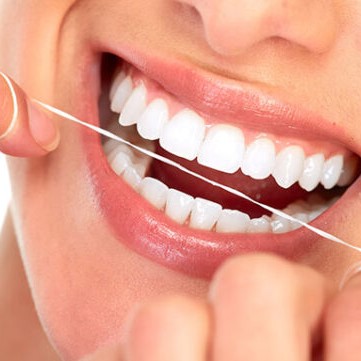While daily brushing is essential to ensuring that your teeth are kept healthy and clean, there’s one area brushing can’t reach: in-between your teeth! Food particles and bacteria can easily get trapped between your teeth where your brush can’t reach, and that’s why it’s essential that you floss twice a day at the same time that you brush.
Most people choose to floss first to help loosen up food particles and then follow this routine with a thorough brushing. By flossing properly, you can remove all the packed in food particles and bacteria from in between your teeth. If these particles are allowed to stay there and fester, it can lead to cavities in-between your teeth, which are especially hard to repair (and often go unnoticed until your next X-ray).
When it comes to flossing, you can’t just start tugging at your gums. You need to floss in a gentle motion, moving side to side to gently rub the floss down in between your teeth. Never snap the floss down into your gums as this can damage them. If you aren’t in the habit of flossing, it will be natural for your gums to bleed as you floss. When you make flossing a regular habit, your gums will be strengthened, and you will not see this bleeding any longer.
Of course, if your gums do continue to bleed for some time once you get into the habit of flossing or if the bleeding is severe and/or happens without flossing, you should reach out to your dentist and ask about it. Bleeding, especially when coupled with sensitive or tender gums, can be a sign of a more serious issue such as gum disease. This should be addressed right away.
With regular flossing in Murrells Inlet, you can help keep your smile bright and healthy. Contact our office today if you have any questions about proper flossing techniques.

